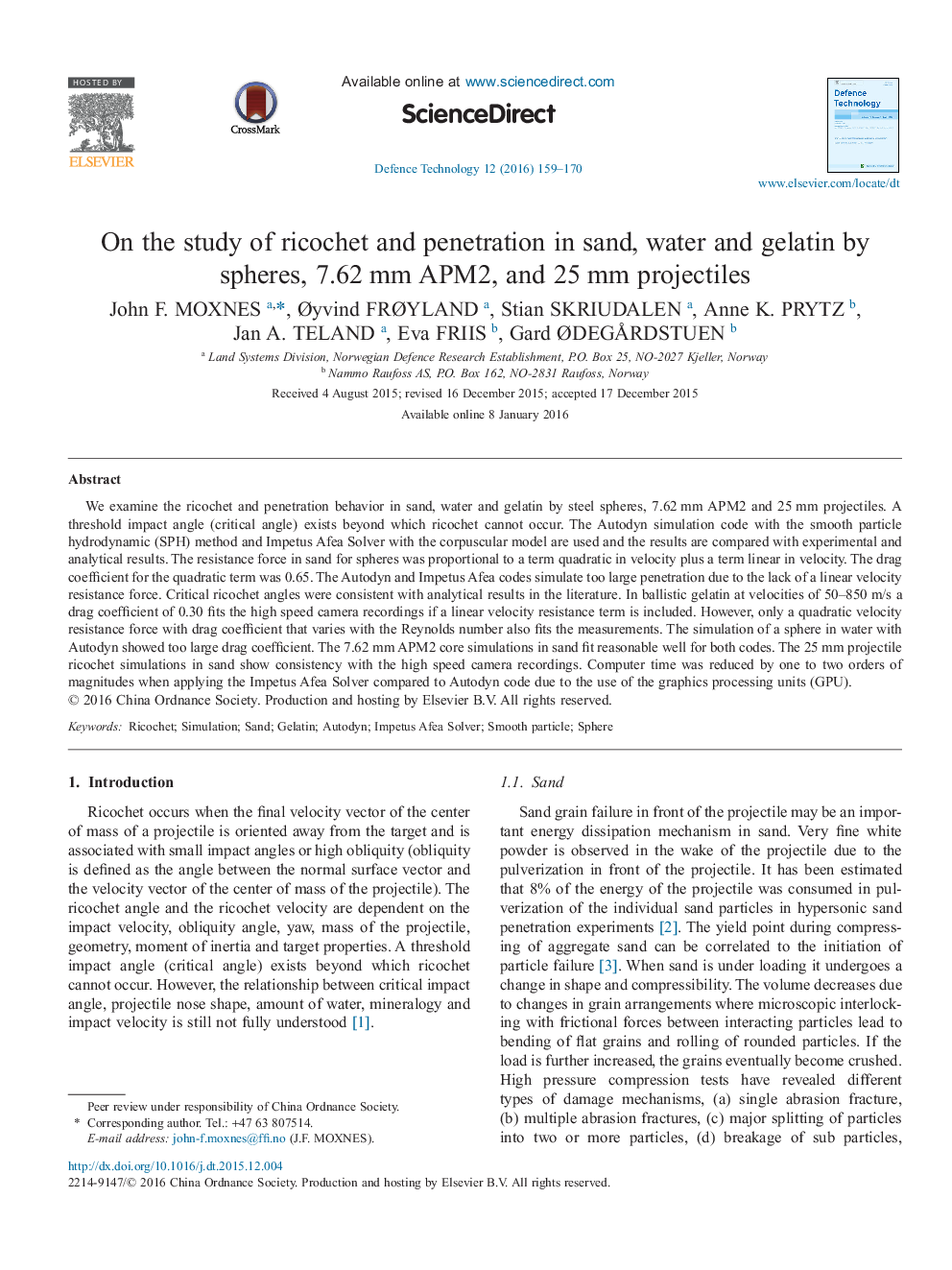| Article ID | Journal | Published Year | Pages | File Type |
|---|---|---|---|---|
| 759455 | Defence Technology | 2016 | 12 Pages |
We examine the ricochet and penetration behavior in sand, water and gelatin by steel spheres, 7.62 mm APM2 and 25 mm projectiles. A threshold impact angle (critical angle) exists beyond which ricochet cannot occur. The Autodyn simulation code with the smooth particle hydrodynamic (SPH) method and Impetus Afea Solver with the corpuscular model are used and the results are compared with experimental and analytical results. The resistance force in sand for spheres was proportional to a term quadratic in velocity plus a term linear in velocity. The drag coefficient for the quadratic term was 0.65. The Autodyn and Impetus Afea codes simulate too large penetration due to the lack of a linear velocity resistance force. Critical ricochet angles were consistent with analytical results in the literature. In ballistic gelatin at velocities of 50–850 m/s a drag coefficient of 0.30 fits the high speed camera recordings if a linear velocity resistance term is included. However, only a quadratic velocity resistance force with drag coefficient that varies with the Reynolds number also fits the measurements. The simulation of a sphere in water with Autodyn showed too large drag coefficient. The 7.62 mm APM2 core simulations in sand fit reasonable well for both codes. The 25 mm projectile ricochet simulations in sand show consistency with the high speed camera recordings. Computer time was reduced by one to two orders of magnitudes when applying the Impetus Afea Solver compared to Autodyn code due to the use of the graphics processing units (GPU).
